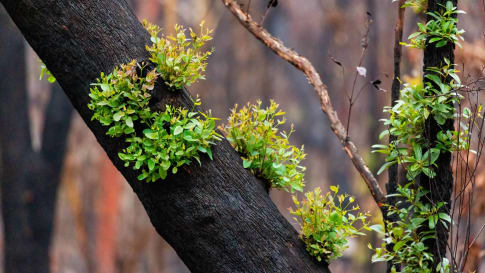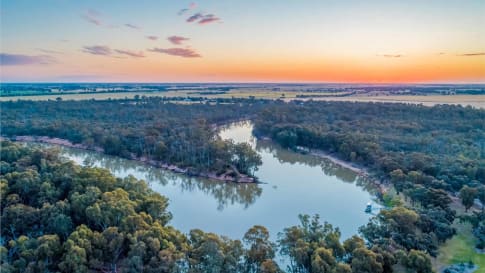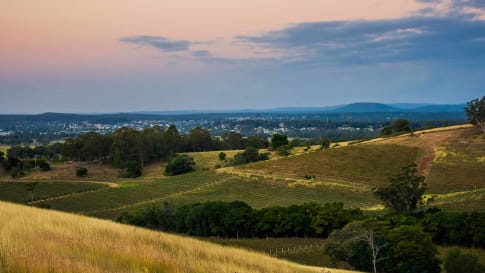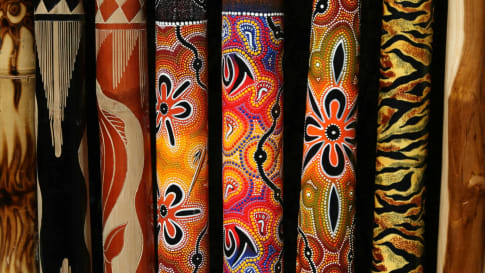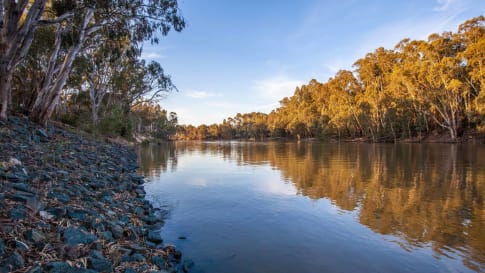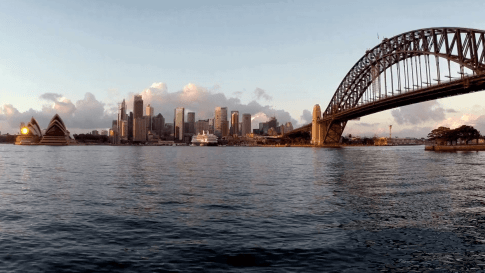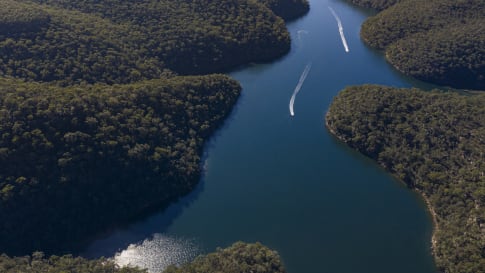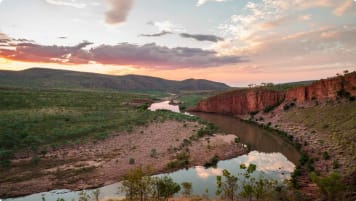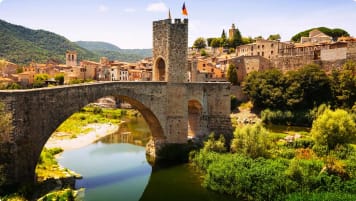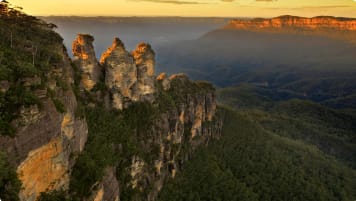Exploring the Hawkesbury-Nepean River small group tour
Explore the Hawkesbury river region with a small group tour for mature and senior travellers, travelling as a couple or solo travellers . Learning about the Aboriginal outback and contemporary art. as you travel up and down and beside the Hawkesbury river.
From A$4,950AUD
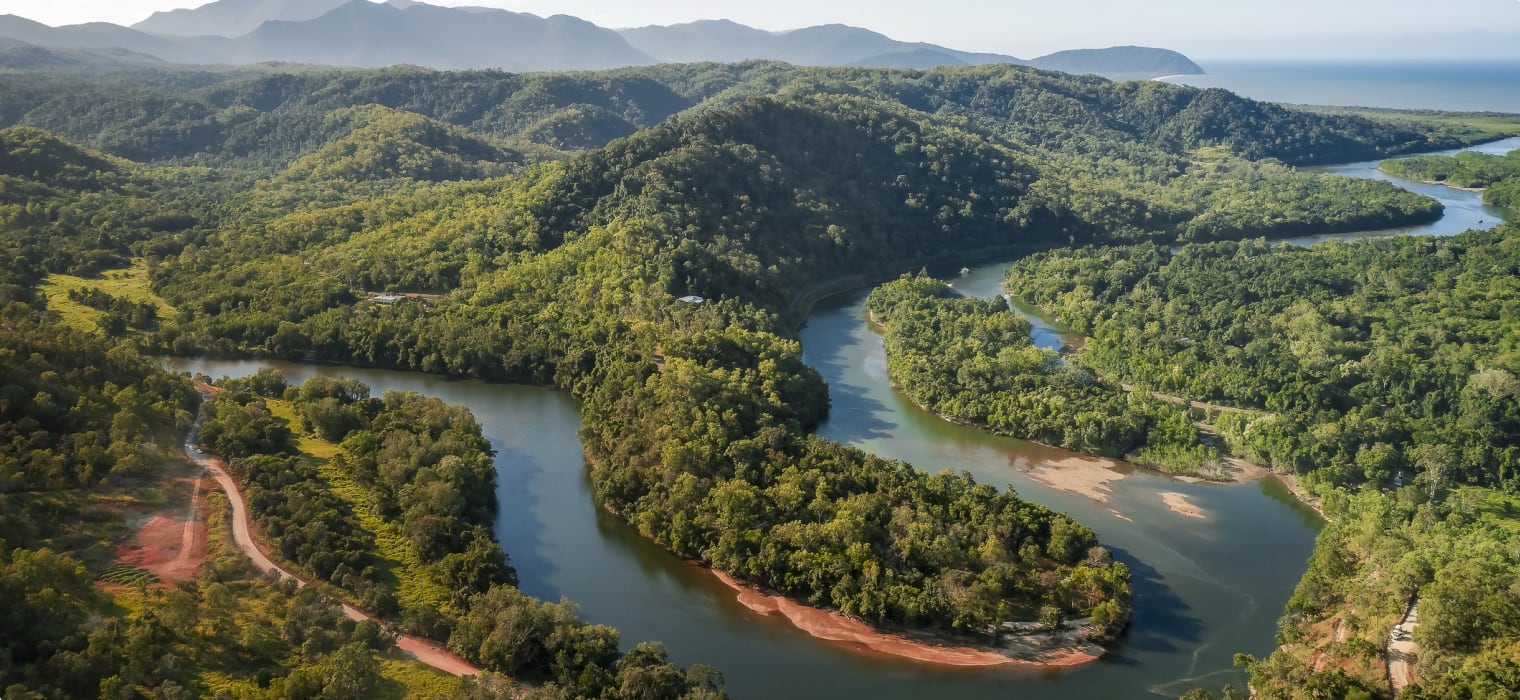
Highlights
- 1. Explore Mt. Tomah and Bilpin in the Blue Mountains
- 2. Visit the archaeological of Lapstone Creek Rock Shelter, known by locals as 'Emu Cave'
- 3. Explore the deep Indigenous history of the region, dating as early as 47,000 years ago
- 4. Take a stroll around Richmond's historic homes and churches
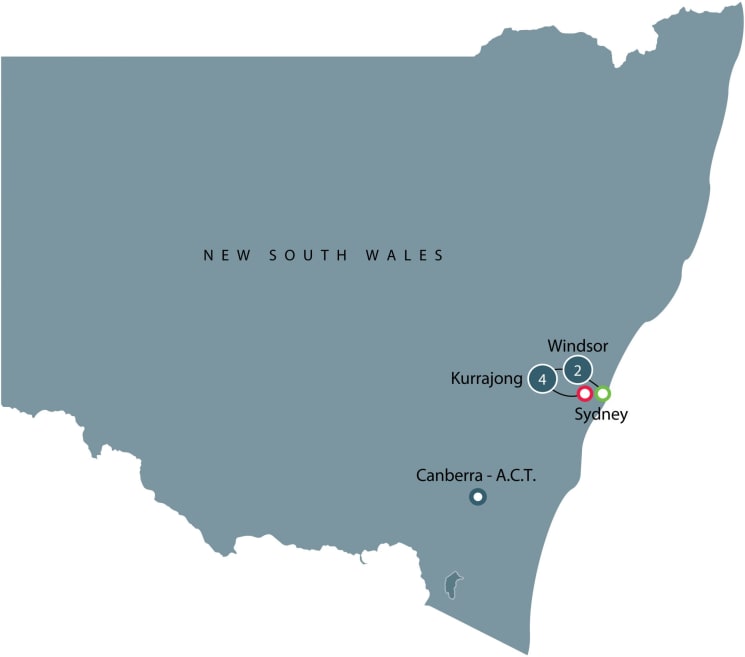
Departure Dates
| Departure Date | Price |
|---|---|
| 28 April 2024 Ends 04 May 2024 • 7 days A$5,150 Twin A$6,350 Single Available | Selected |
| 13 October 2024 Ends 19 October 2024 • 7 days A$5,150 Twin A$6,350 Single Available |
Exploring the Hawkesbury-Nepean River small group tour
Discover the small town charm, and delve into the deep and incredibly ancient Indigenous history of the Hawkesbury-Nepean River. Along our tour we will visit historic towns of the Hawkesbury valley, such as Windsor and Richmond, with highlights including a paddle-wheel cruise, and visit to the Blue Mountains National Park. Our tour also highlights the Indigenous Australian history so intricately woven into the Hawkesbury region's history, visiting several sites of Indigenous importance and learning more about the land, and its story.
This, like all Odyssey Traveller small group tours is limited to 15 people.
This Odyssey Traveller small group tour is designed for mature and senior travellers, in couples or travelling solo, who want an in-depth and informed experience of their travel destination in New South Wales. Since 1983, Odyssey has specialised in bringing Australian travellers to see the world: now, our goal is to let you rediscover your own country.
Our Hawkesbury- Sydney tour lasts for one week, departing from Sydney in the morning before arriving at the charming historic town of Windsor. During our time in Windsor, we will visit a number of local destinations such as the St Matthews, and Ebenezer Churches, the latter of which is the oldest church in Australia. Other local highlights include Wisemans Ferry, Tizzana Winery, the regional gallery, as well as the Windsor craft market. Along the way we will also take a short walk showing the convict road building remnants, which date back to the Hawkesbury region's colonial days. Another of the Hawkesbury's historic towns we visit along our tour is Richmond. Located just to the west of Windsor, Richmond has a trove of historic homes and churches we will visit along our tour, as well as the town's cemetery, where many of the Hawkesbury's famous residents are buried. Our tour also stops in at a hidden local gem for lunch, before heading up to the Streeton lookout, from which you can view the river, the RAAF base, and surrounds from a higher perspective. We also visit the Purple Noon gallery during our tour of Richmond, which features an avant-garde collection from local artists.
Exploring Indigenous history is also a fascinating addition to our journey, with the region's Aboriginal people sharing in a history that stretches back over 47,000 years, among the most ancient in all of Australia. In line with this, Indigenous history will be a continual theme throughout our journey, with parts of our tour serving as an educational journey, as well as a view into how this beautiful landscape would've looked like prior to European settlement. During our trip to Mt. Tomah and the Blue Mountains National Park, we venture to an incredibly important archaeological site known as Lapstone Creek Rock Shelter, known by locals as 'Emu Cave'. Emu cave was an excavation site during the 1930s and 40s, with discoveries ranging from stone axe heads, to quartz tools, and other small backed tools. The finds within mark one of the first places of thorough European Australian engagement with Aboriginal archaeology and deep history. Prior to this, the common conception had dismissed ancient Aboriginal history as that of a simple unchanging stone age people, an attitude illustrative of the era's racially charged attitudes.
This deep history the Aboriginal people have with the land runs back some 120,000 years. For the Hawkesbury valley the deep history is illustrated by archaeological finds which place Indigenous habitation at a date as early as 47,000 years ago. What prompted this incredible story was the discovery of an ancient stone chopping tool, dated at the time to between 26,000 -32,000 years old, one of the oldest artefacts found on the east coast. The stone itself resembles a medium size rock, with three large scalloped indentations missing from its side, a pattern evident of human use. It was found in the 1970s by archaeologist Father Eugene Stockton, and prompted a heated discussion in light of the site's excavation and development. Just a decade earlier in the 1960s, Australian archaeology had begun to pick up in earnest, with estimates commonly dating Aboriginal settlement in Australia back 15,000-20,000 years ago, with sites such as Emu Cave being instrumental in provoking this exploration. However, as more discoveries were made, and dating methods beyond radiocarbon became more widespread, the timeline of Aboriginal habitation was found to be even more ancient than previously thought. During the 1980s, the Hawkesbury stone caused yet another breakthrough, with more accurate and modern dating techniques placing the stone at an unprecedented age of 47,000 years, sparking headlines such as 'The Oldest known site of Modern Man'. As further finds along the river basin were unearthed, archaeologists have come to agree that the Hawkesbury-Nepean region is one of the oldest sites of Aboriginal habitation in Australia, with the area even likely to be part of the initial colonisation wave.
For all the articles Odyssey Traveller has published for mature aged and senior travellers, click through on this link.
Articles about Australia published by Odyssey Traveller:
- Aboriginal Art
- Ancient Aboriginal Trade Routes
- Madjedbebe Archaeological Site
- Mungo Man and Mungo Lady
- The Australian Outback: A Definitive Guide
- Sydney and the Rocks District
For all the articles Odyssey Traveller has published for mature aged and senior travellers, click through on this link.
For an amazing history of the Hawkesbury, Odyssey highly recommends Grace Karsken’s ‘People of the River’ (2020), which has been a great source of inspiration for our material.
Gallery
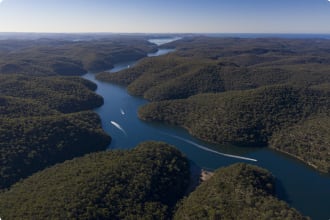

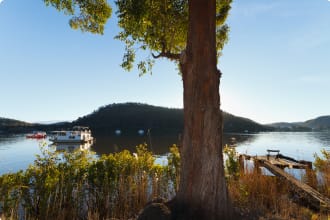
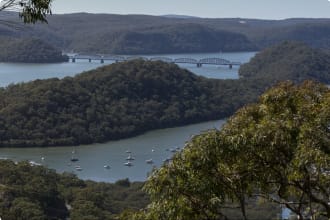
Itinerary
7 days
Day 1: Windsor
Accommodation: Crowne Plaza Hotel or similar
The group departs Sydney at 10am in the morning, arriving in Windsor at approx. 11:30. We take the bus up to lunch in Windsor at the Macquarie Arms Hotel, before talking a slow walk to the regional museum around the corner. Afterwards, the group takes a short walk along the Hawkesbury River, before alighting by bus to see some of the town’s historically significant buildings, such as St Matthews Church. Following this, the group will have some time to rest up at the hotel before dinner.
Day 2: Windsor
Accommodation: Crowne Plaza Hotel or similar
We begin the day with breakfast, before taking a bus to Wisemans Ferry. For the adventurous amongst the group, you can always climb up to Judgement Cave on the way up to Wisemans, before stopping in the village near Sol Wisemans original home. Next the group has the option of morning tea or brunch at the local pub, before driving down to the ferry, parking up, and alighting on foot for the ride across the river. Next the group takes a short walk, showing the convict road building remnants, before going back over the river. Next we make two stops along the way back to Windsor, the first being Ebenezer Church, the oldest church in Australia, as well as the beautiful Tizzana Winery.
Day 3: Kurrajong
Accommodation: Loxley on Bellbird Hill
We check out of Crown Plaza in the morning, leaving the luggage on the bus. We head to the Regional Gallery in Windsor, before walking through the Windsor craft market, which runs on the town’s main street each Sunday. Next we take the bus to Kurrajong village, where we stop for lunch and a walk around, the town is full of cute venues, shops and historical properties. Following on from this we take the bus a short drive to Loxley on Bellbird Hill, where we will check in. Next there will be some time to walk the grounds before dinner, this is a good opportunity to listen about the history of the property from its current owner.
Day 4: Kurrajong
Accommodation: Loxley on Bellbird Hill
After breakfast, we drive up to the town of Bilpin, stopping at two stunning photo spots along the way. Next we visit some local apple orchards, as well as several other cafes and businesses recovering well from the 2020 bushfires. Following this, we head on the Mt. Tomah Blue Mountains National Park, before stopping for lunch. Following lunch, the group heads out to Emu Cave, an incredible archaeological site, you can learn more about its significance in Grace Karsten’s book ‘People of the River’. After this, we venture back to Loxley for dinner.
Day 5: Kurrajong
Accommodation: Loxley on Bellbird Hill
After breakfast, we drive to the beginning of the Grose River at the back of Kurrajong for a glimpse of how things may have looked before European settlement. This Garden of Eden spot is breath-taking and well worth a little walk in. Next we head down to explore the town of Richmond, with a tour of the town’s heritage, exploring some of its oldest churches and heritage homes, as well as a cemetery, which is home to some of Hawkesbury’s most famous residents. We have lunch at a charming spot, with tables in a private garden outside of a lovely antiques shop. Next we head for a drive up to the terrace above Richmond, to the Streeton Lookout. Here we can see the views of the river, RAAF base, and all the surrounds from this incredible vantage point. Finally we head to the High Noon art gallery, which features avant-garde from local artists, before heading back to Loxley once again for dinner.
Day 6: Kurrajong
Accommodation: Loxley on Bellbird Hill
Today we head down to Windsor Wharf and get on board the Hawkesbury paddle-wheeler for a cruise and lunch aboard. Our host Ian Burns will be there to answer questions about the river. Our local indigenous guide will share stories about the river and its rich and ancient history of Aboriginal settlement. We head back to Loxley for some rest, before heading out to dinner at the Kurrajong Heights hotel, which has a fantastic view.
Day 7: Kurrajong
After breakfast, we drive over to the Wilberforce Wild Cat Sanctuary for a guided group tour. This facility is modernizing their reception area, which plains to be completed by June 2021. They have cheetahs, as well as many other big cat species on a huge property on the rolling hills of Wilberforce, and are involved in several conservation programs. We have lunch at Crazies on Bells Line of Road, before heading back to Sydney late afternoon.
Tour Notes
- The order of visits may change due to individual venue opening hours and Covid-19 restrictions.
Includes / Excludes
What’s included in our Tour
- 6 nights hotel accommodation,
- 6 breakfasts, 3 lunches, and 4 dinners.
- Entrances and visits as indicated.
- Services of a program leader and guides.
What’s not included in our Tour
- Comprehensive travel insurance.
- Items of a personal nature, such as telephone calls and laundry
Participants must be able to carry their own luggage, climb and descend stairs, moderate walking on uneven surfaces between 3 - 5 kilometers per day. Suitable for most fitness levels
Book now
Make it a private tour
Easing your journey
Crossing international borders with restrictions
The list of requirements to travel internationally has changed and will continue to change for several years. Odyssey is here to assist you in managing your way through these requirements:
For more information see our Crossing international borders with restrictions page.
Book With Confidence
If less than 30 days before your tour starts you are unable to travel as a result of Government travel restrictions, Odyssey Traveller will assist you with a date change, provide you with a credit or process a refund for your booking less any non-recoverable costs.
See Terms and conditions for details.
Peace of Mind Travel
The safety of our travellers, tour leader, local guide and support staff has always been our top priority and with the new guidelines for public health and safety for keeping safe for destinations around the world, we’ve developed our plan to give you peace of mind when travelling with us.
See Peace of Mind Travel for details.


